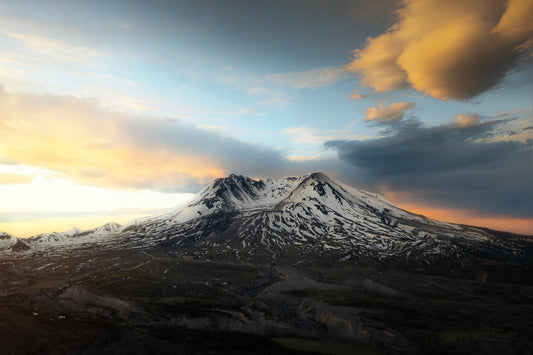Hello again! Welcome to our next addition to our mini blog series. We hope the last two posts have been of help to you and we plan to continue aiding your growth in the photography world with this next section. If you haven't already, catch up with our blog about Rule of Thirds and leading lines before jumping into this section.
Composition Essentials - Continued
We've already covered two of the six important aspects of composition with Rule of Thirds and leading lines, and now we're going to dive into putting those two to use when it comes to overall framing techniques of our photos. We will continue to utilize what we've learned so far and start to understand the deeper fundamentals on applying these tools while you're out on your photography adventures. We'll be teaching you how proper framing can add depth, context, and better focus in your photos so you're able to draw the viewers attention to the central point of interest you're trying to capture.

Section 3: Framing Techniques
There's a variety of framing techniques available at your disposal. Each one playing a certain part in the style of composition you're trying to capture. Take a natural frame for example. Natural occurring elements like archways, door frames, or branches hanging over your subject can serve as an excellent framework for your photos. Using these elements helps create a sense of place and enhance the overall story of your photography. You can also mix in foreground elements. Foreground elements such as flowers or rocks, or any other objects of the sorts, are a healthy addition to the main subject in your photo because it adds layers to frame the overall composition. For instance, take a look below and see how the main subject is at the forefront of the image. The added details in the background help boost the main subject of the photo (the birds) and creates an appealing visual story for the scene taking place. Even the minor details of the ground play a vital role of the overall image.

Lights and shadows are useful in creating a masterful framework for your photos. Using these to your advantage can create a dramatic feel or mystery to your scene, leaving your audience feeling captivated. Mixing lights and shadows with human elements can produce some fascinating results. Integrating human elements provides a sense of scale and more context to the impact your story will display. These two together can establish a powerful feeling inside your audience as they're able to piece together the human elements while they survey the entire image. You'll see an example below of these two working in unison.

One of our favorite types of framing techniques is capturing reflections. There's many ways to do this whether it's with water, glass, or other reflective surfaces. This technique doesn't just add visual interest, but it also creates a wonderful symmetry and balance to your composition. It's a very soothing practice and the results are tremendous. We have yet to meet someone who has a distaste for refection style photography, and frankly hope we never do! I mean who doesn't love photos like this one below? It's breathtaking and framed perfectly!

Two other important techniques we'd like to teach you about are the overlap technique and the use of negative space. The overlapping technique is similar to the foreground portion of this post because it essentially focuses on adding a three-dimension feel to your images. Letting these foreground elements overlap your main subject will create an awesome sense of depth and life to your frame so it becomes visually engaging. Lastly, utilizing negative space let's you create a cleaner frame altogether. This usually turns into a more minimalist style of photography and brings your subject to the center stage making an impactful statement to your audience. It eliminates noise and places the viewer cleanly into the scene you froze in time.

Applying the three sections you've learned so far in this mini blog series has you well underway to framing the perfect shots. The Rule of Thirds, leading lines, and framing techniques mentioned above are practices you want to continue working on while you're out taking your photos. Mixing all three of these together should enhance your work and create an even balance for each of your compositions. In our next blog we'll be highlighting the importance of symmetry and asymmetry in your photos and how you can utilize both of them to your advantage. As always if you found this this blog to be helpful please drop a comment below to let us know or share it with your friends who are also looking to master their craft!
Take care and happy clicking!








1 comment
I’ve been cruising along from section to section and its been really helpful with me learning. Photography is fun and cant wait to learn more. Thank you for these